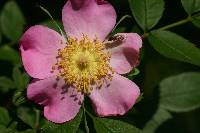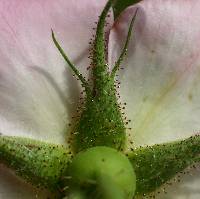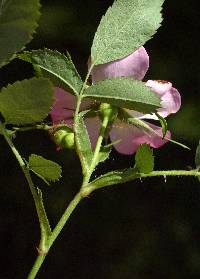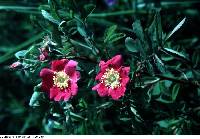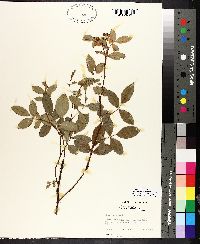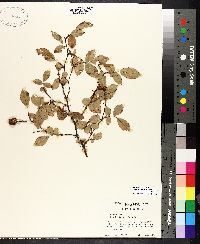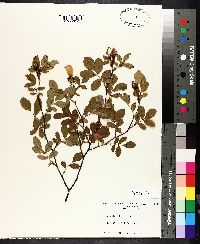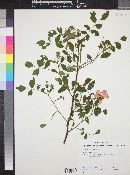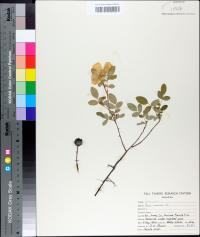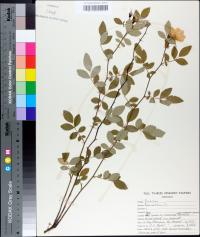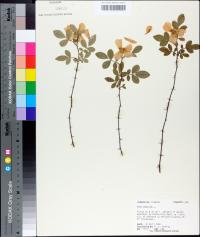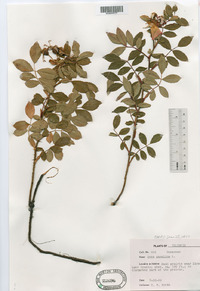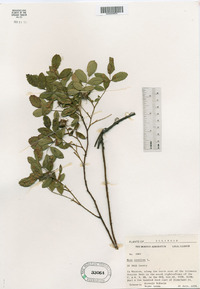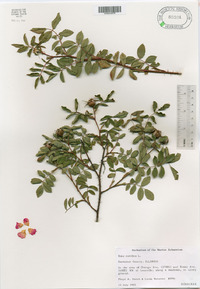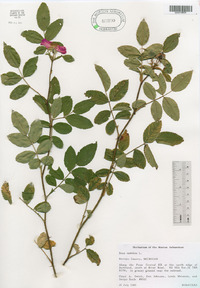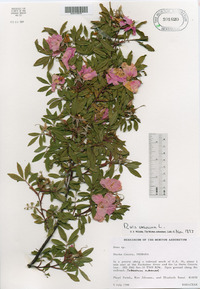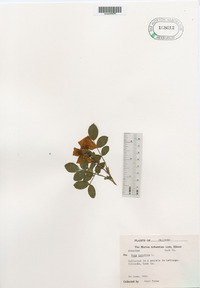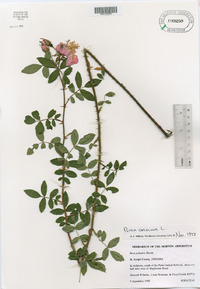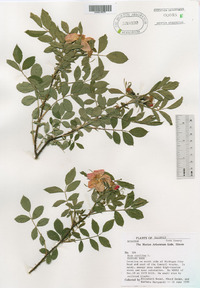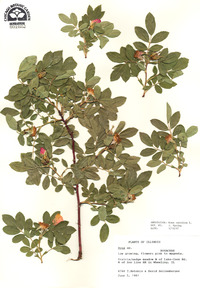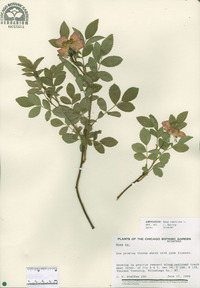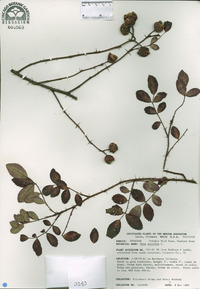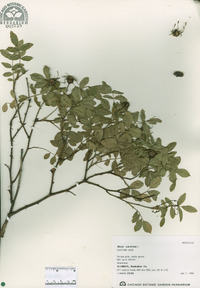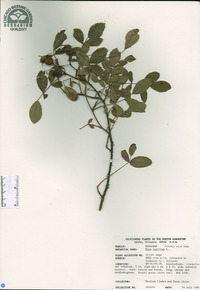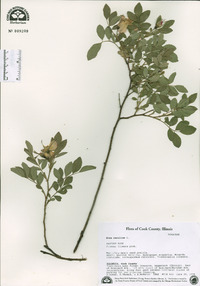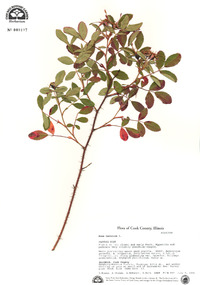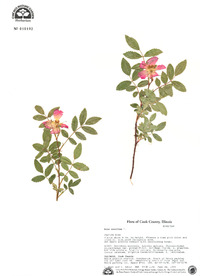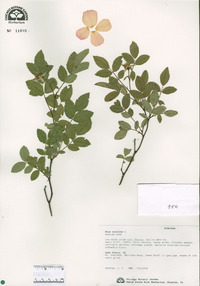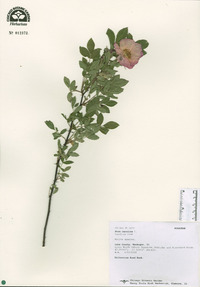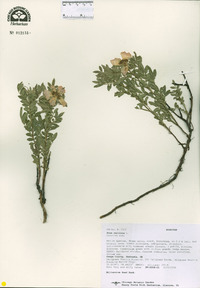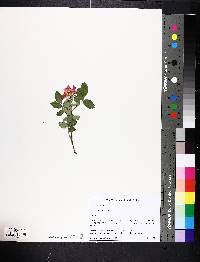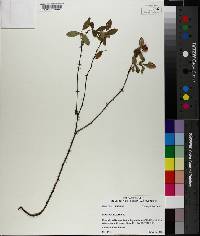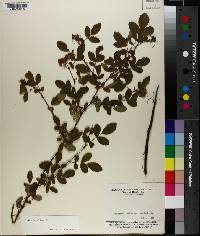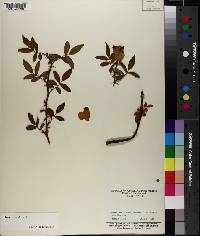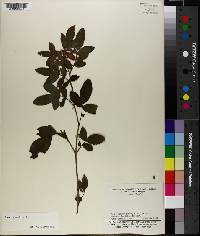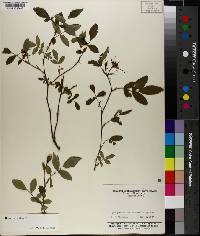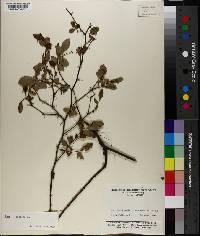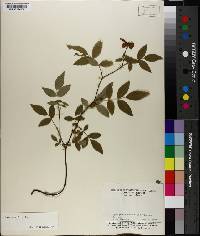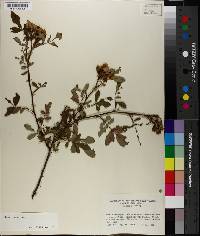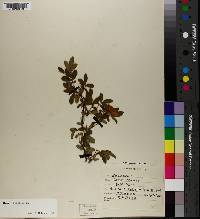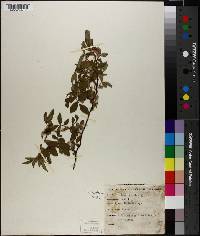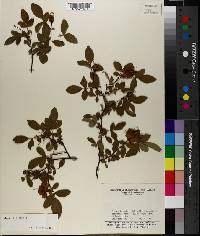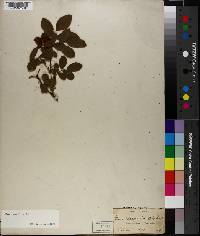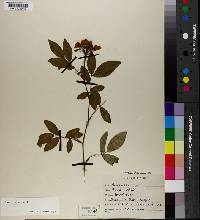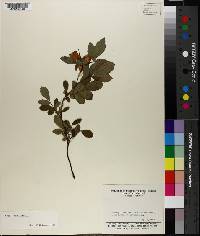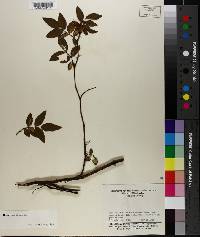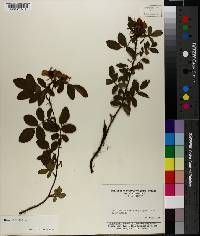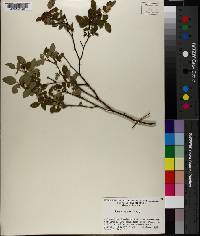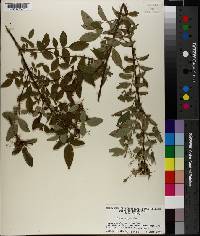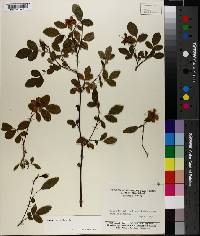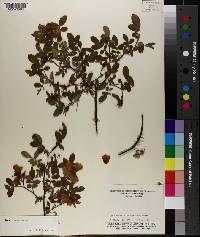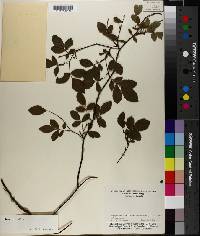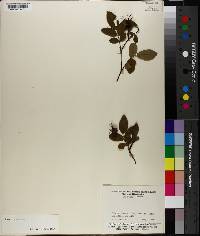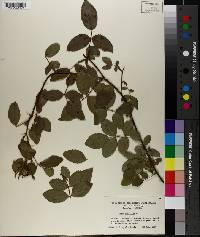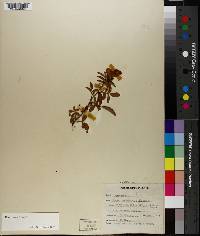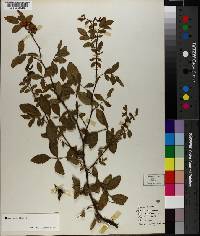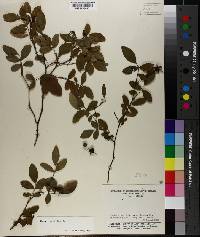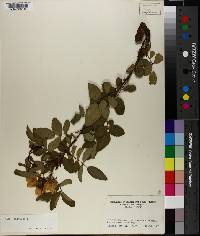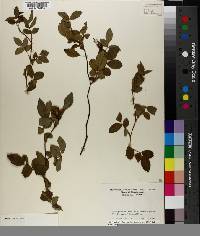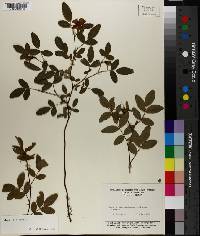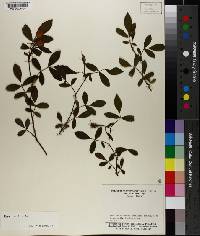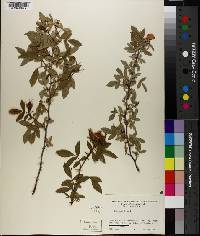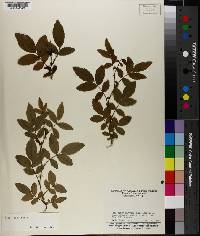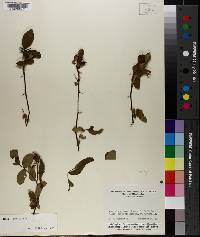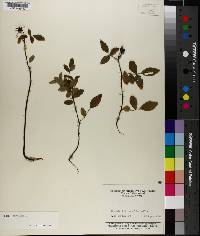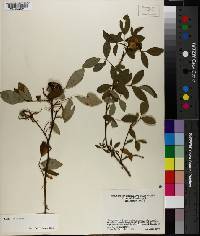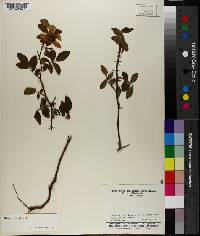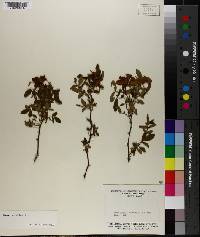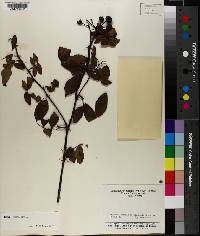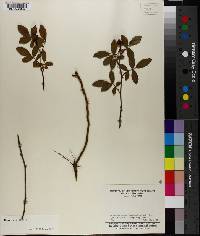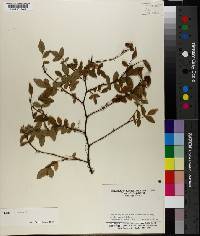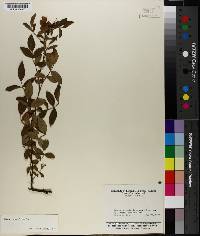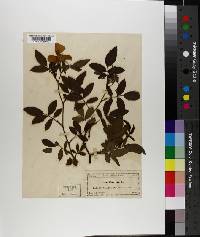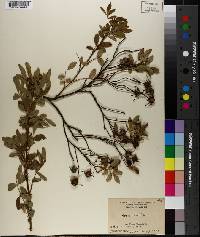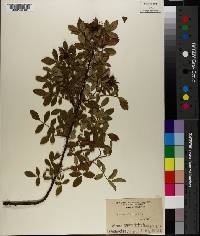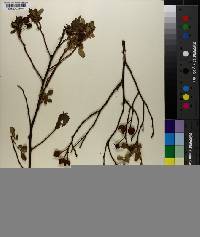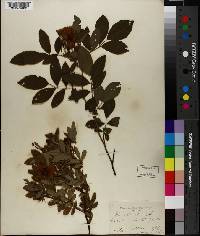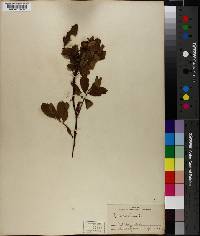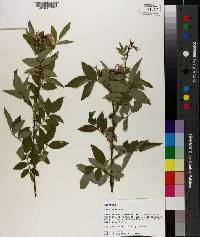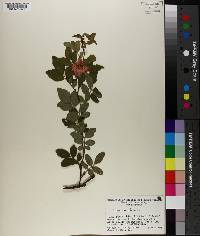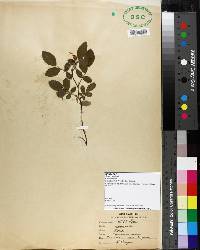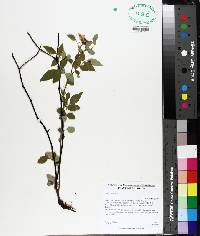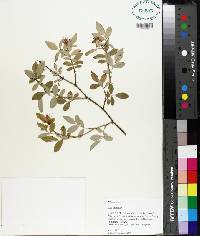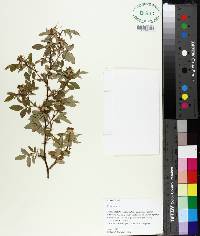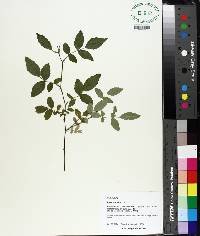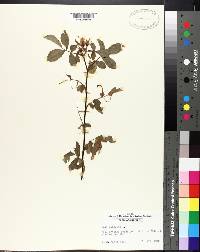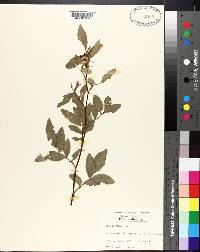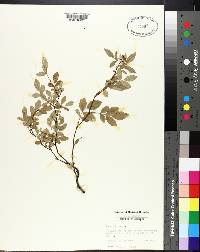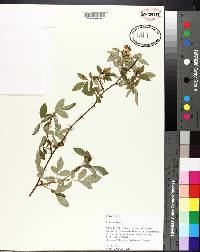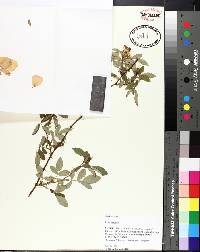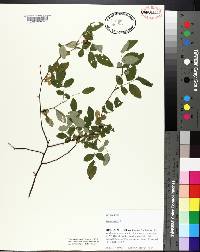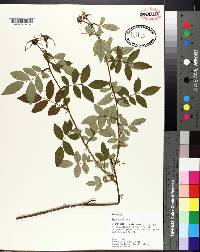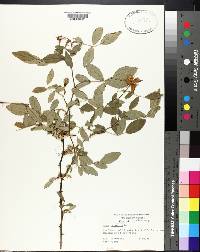
|
|
|
|
Family: Rosaceae
Carolina Rose
[Rosa aucuparia, moreRosa caroliniana , Rosa petiolata , Rosa treleasei , Rosa × carolina L.] |
Colony-forming shrub to 1 m tall Stem: slender, unbranched to few-branched, densely prickly near base but becoming sparse near tip. The slender, straight prickles vary in length, are circular in cross-section, with the base less than half as long as the body. Prickles that subtend stipules are 4 - 9 mm long and straight to slightly reflexed. Leaves: pinnately compound, stalked, with three to nine leaflets (usually five). The leaflets are 1.5 - 4 cm long, usually more then half as wide as long, elliptic to narrow egg-shaped with a pointed to blunt tip, coarsely toothed (fewer than fifteen teeth per side), sometimes glandular on margins, hairy-veined or nearly hairless, dull or slightly shiny above, and paler beneath. Flowers: usually borne solitary on current season's stems, 3.5 - 5.5 cm across, with a stalked-glandular stalk and floral tube (hypanthium), non-persistent spreading to reflexed sepals gradually tapering to a linear tip, lobed outer sepals, and pink petals 2 - 3 cm long. Fruit: bony achenes surrounded by the mature floral tube (hip). The hip is red, 8 - 12 mm across, and nearly spherical. Achenes dark brown, 4 - 5 mm long, inversely egg-shaped, sometimes with one straight side. Stipules: subtending leaves, glandular-toothed to non-toothed, firm, narrow, flat. Similar species: Rosa carolina, Rosa palustris, and Rosa virginiana all have non-persistent sepals and stalked-glandular flower stalks and floral tubes. Rosa palustris is distinguished by its stout and awl-shaped to recurved prickles, stipules that roll inward, and usually seven dull leaflets with more than fifteen teeth per side. It is also a tall shrub of wet habitats. Rosa virginiana differs by having some slender and straight bristles and some stout and curved prickles, and also by having seven to nine shiny and coarsely toothed leaflets. One variety of Rosa carolina is found in the Chicago Region. See link below for further information. Flowering: late June to early August Habitat and ecology: Common on dry prairies and sandy Black Oak savannas. Occurence in the Chicago region: native Etymology: Rosa is the Latin name for a rose. Carolina means "from the Carolinas." Author: The Morton Arboretum Colonial; stems simple or little-branched, rarely over 1 m, usually copiously armed with internodal prickles, these all about alike in form, but variable in size, straight, slender, and terete to the base, which is mostly less than half as long as the body; infrastipular prickles scarcely differentiated; stipules glandular-dentate to entire; lfls 3-7, oblong to oval or subrotund, often more than half as wide as long, coarsely toothed, in some forms glandular on the margin; fls usually borne singly on stems of the season; pedicel and hypanthium stipitate-glandular; sep attenuate into a linear tip, or rarely with a narrow foliaceous appendage, soon spreading or reflexed, then deciduous; pet pink, 2-3 cm; hips red, 8-12 mm thick; 2n=28. Uplands woods, dunes, and prairies; Me. to Minn., s. to Fla. and Tex. (R. housei; R. humilis; R. lyonii; R. obovata) Hybridizes extensively with R. arkansana (forming R. زudiuscula), and R. virginiana, and perhaps less often with R. acicularis and R. palustris. Gleason, Henry A. & Cronquist, Arthur J. 1991. Manual of vascular plants of northeastern United States and adjacent Canada. lxxv + 910 pp. ©The New York Botanical Garden. All rights reserved. Used by permission. |


